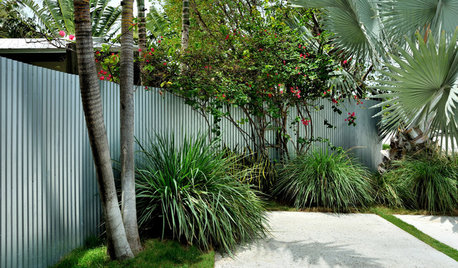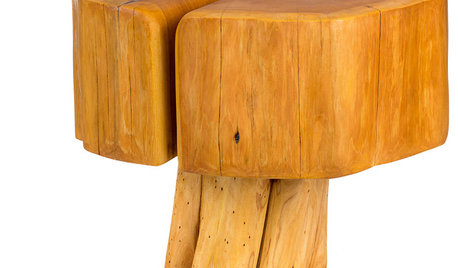Alum
cweathersby
13 years ago
Related Stories

ECLECTIC STYLEHouzz Tour: Eclectic Down-Home Style in Texas
A Texas family goes for comfortable, colorful furnishings and crisp white walls for a look they call ‘Southern Americana’
Full Story
CONTEMPORARY HOMESHouzz Tour: Geometric Patterns Unify a Cambridge Home
Repeating motifs, materials and colors run throughout this updated 19th-century Massachusetts residence
Full Story
MATERIALSHumble Corrugated Metal Brings Modern Style to the Garden
This sustainable material is not just for rooftops. See these ideas for using it for fences, beds and rain barrels in your yard
Full Story
VINTAGE STYLEKitchen of the Week: Cheery Retro Style for a 1913 Kitchen
Modern materials take on a vintage look in a Portland kitchen that honors the home's history
Full Story
LIFETime Travel to Houzzers' Childhood Homes, Part 1
Peek into home design's past and share the memories of Houzz community members with these personal photos and stories
Full Story
KITCHEN DESIGNKitchen of the Week: What a Difference Paint Can Make
A bold move gives a generic Portland kitchen personality without a major overhaul
Full Story
ECLECTIC HOMESHouzz Tour: Hand Crafting Rehabs a Michigan Farmhouse
Artisan-made and vintage furnishings, a coffered ceiling and agrarian touches give a century-old home warm appeal
Full Story
HOUZZ TOURSMy Houzz: A Rock 'n' Roll Dad's Pad Gets a Tune-up
Small additions and renovations bring casual style to a spacious midcentury ranch home
Full Story
PRODUCT PICKSGuest Picks: Beautiful Things You Can Feel Good About Buying
Upcycled, ecofriendly or just made responsibly, these home accessories and furniture pieces will keep your conscience clear
Full Story
TRAVEL BY DESIGNAirstream Remodel Creates the Perfect Portable Getaway
A Wisconsin trailer waves goodbye to the 1970s and sets off for modern territory
Full Story






drh1
drh1
Related Professionals
Wrentham Landscape Architects & Landscape Designers · Marina Landscape Architects & Landscape Designers · Wakefield Landscape Contractors · Arlington Landscape Contractors · Edmond Landscape Contractors · Byram Landscape Contractors · Lorain Landscape Contractors · Lynn Landscape Contractors · Manhattan Landscape Contractors · Ponte Vedra Beach Landscape Contractors · Woodburn Landscape Contractors · Woodland Landscape Contractors · Yukon Landscape Contractors · San Pablo Landscape Contractors · East Cleveland Gardeners & Lawn CarecweathersbyOriginal Author
drh1
cweathersbyOriginal Author
drh1
cweathersbyOriginal Author
cweathersbyOriginal Author